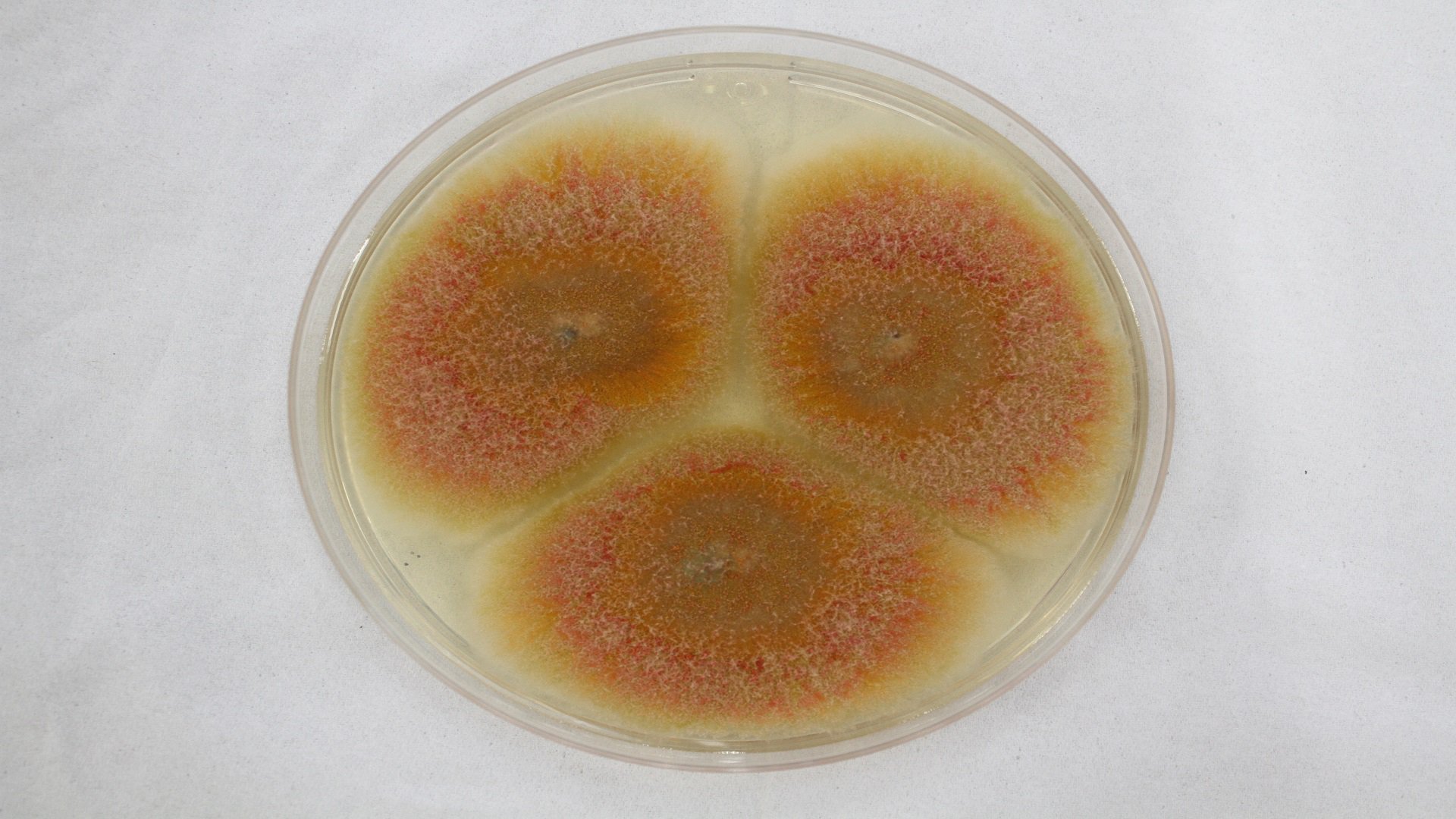Fusarium venenatum is known from Quorn, a brand that produces meat substitutes. This fungus produces a protein – mycoprotein – which has a meat-like texture.
Fusarium venenatum is known from Quorn, a brand that produces meat substitutes. This fungus produces a protein – mycoprotein – which has a meat-like texture.
Furthermore, it contains a lot of proteins and vitamins, and therefore a suitable meat substitute. In nature you can find this Fusarium venenatum in the soil, where it processes organic material.
Discovery
Almost 60 years ago Lord Rand, the founder of Quorn, had a revolutionary idea. He predicted a shortage of protein rich foods, because of a large increase in the human population. He, together with scientists, started a hunt for a protein rich food in the invisible world of microbes. After a couple of years, he found the perfect microbe: Fusarium venenatum.
Nowadays, there is absolutely no shortage of protein rich foods, but we do have another problem. The production of meat has a large CO2 footprint. The discovery of Lord Rank serves an important outcome; the production of Quorn pieces makes for 70% less CO2 than the production of chicken. The fungus furthermore is not as thirsty; the water use is about 12x less than it is for the production of minced meat!
Sustainable production
Similarly, to the production of beer, yogurt, and bread, fermentation is used in the production of mycoprotein. In five weeks, a tiny amount of Fusarium venenatum grows out to around 1500 tons of mycoprotein. For culturing this fungus enormous tanks (fermenters) are used. Creating the perfect environment enhances the growth of Fusarium venenatum. Glucose (sugar) and solid nitrogen are added for the fungus to feed on. Vitamins and minerals are added to increase the nutritional value of the end product. To get the end product, the mycoprotein is mixed with egg albumen or – for the vegan option – with potato protein.

